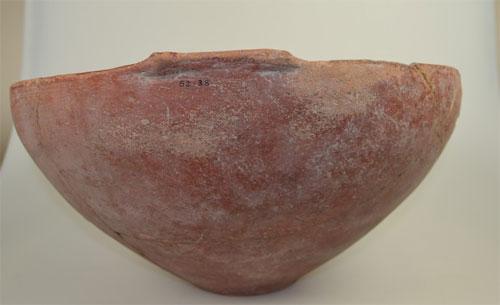
The husband and wife who excavated pottery from tombs in Cyprus

Chrissy Partheni, Curator of Antiquities, explores how distinctive red-polished pottery, excavated from tombs in Cyprus in the 1930s, came to be in our collections here in Liverpool.

Vounous is in Bellapaise in northern Cyprus and it is a site known for the famous, Early to Middle Bronze Age Cypriot period. Following the discovery of the much discussed and intriguing Vounous bowl with modelled figures in its interior, in 1931/32 by Cyprus Museum, there was a lot of interest in further excavation.
In 1937-38, the Australian archaeologist James Stewart, who had just finished a masters at Cambridge, worked on excavating the east side of the cemetery. The excavation was a major undertaking and it involved the clearing of some 85 fully furnished tombs and a substantial volume of antiquities. James’s wife, Eleanor Stewart was responsible for the accurate recording and drawing of all the material. She took great care to describe the fabric of the clay in each pot - important information for tracing patterns of production and distribution in prehistoric times.
Many of the findings stayed with the Cypriot Department of Antiquities and some went to Cambridge. Some of the material from the excavation was exhibited at the Institute of Archaeology in Regents Park in 1939. We know from a letter from our archives that in 1952 that J.H. Iliffe, then director of Liverpool Museum, who had excavated Kouklia, another site in Cyprus, expressed an interest in acquiring material from the Cambridge Museum of Classical Archaeology. As a result the complete findings from tombs 123 at site B and 134 from site A were donated to Liverpool Museum, now World Museum.

The 23 pots in our collections were found in the chambers of the tombs. Some are very large jugs and one large basin (see right) contained smaller bowls (like the one above). All the pottery dates from the Early Cypriot Age I and II eras ( 2500-2000 BC). The pots are distinct for their red polished surface and some have colouring effects or colour fluctuating from red to brown, to grey and black along their bodies and interior. Such effects speak for the sophisticated firing techniques employed by the potters. This collection tells the fascinating story of burials and customs in Early Bronze Age Cyprus and is a testimony to the creativity and individuality of the potters at the time.
